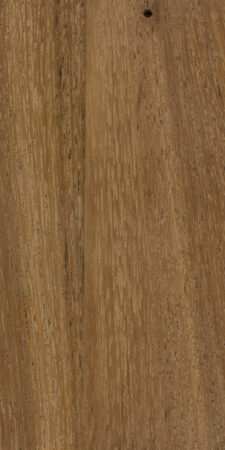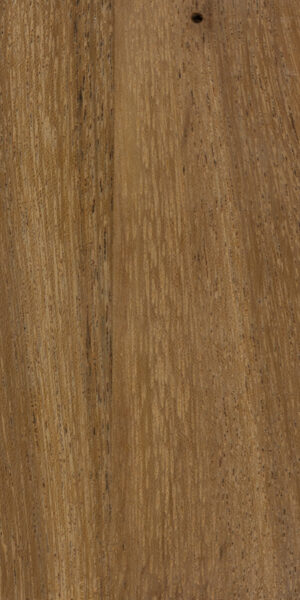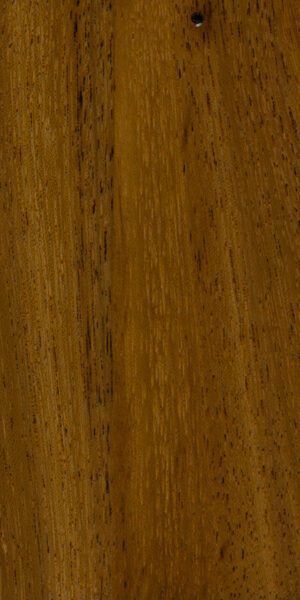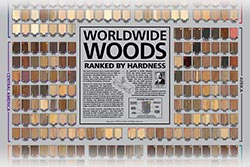Common Name(s): Sneezewood, mwandara
Scientific Name: Ptaeroxylon obliquum
Distribution: Southern Africa
Tree Size: 50-65 ft (15-20 m) tall,
1-2 ft (.3-.6 m) trunk diameter
Average Dried Weight: 62.4 lbs/ft3 (1,000 kg/m3)
Specific Gravity (Basic, 12% MC): .88, 1.00
Janka Hardness: 3,080 lbf (13,700 N)
Modulus of Rupture: 21,100 lbf/in2 (145.5 MPa)
Elastic Modulus: 2,567,000 lbf/in2 (17.70 GPa)
Crushing Strength: 12,330 lbf/in2 (85.0 MPa)
Shrinkage: Radial: 3.6%, Tangential: 5.6%,
Volumetric: 9.3%, T/R Ratio: 1.6
Color/Appearance: Heartwood is medium red to dark reddish brown, aging to a more moderate golden brown.
Grain/Texture: Grain is wavy, with a fine, uniform texture and good natural luster.
Rot Resistance: Rated as very durable; excellent insect and borer resistance. (Lumber is also reported to have good fire resistance.)
Workability: Tends to be difficult to work on account of its density and wavy grain. Turns well. Gluing can be problematic because of oils present in the wood.
Odor: Has a distinct, highly irritating, pepper-like smell (see allergy information below).
Allergies/Toxicity: True to its name, sneezewood contains a special chemical compound called nieshoutol that has been shown to cause violent sneezing among workers processing the wood. See the articles Wood Allergies and Toxicity and Wood Dust Safety for more information.
Pricing/Availability: The wood is available within its natural range. However, because of the highly irritating nature of the wood’s sawdust, its commercial potential is severely capped.
Sustainability: This wood species is not listed in the CITES Appendices, and is reported by the IUCN as being a species of least concern.
Common Uses: Exterior construction, fence posts, furniture, musical instruments (xylophones), carving, turned objects, and other small specialty wood items.
Comments: Aptly named, sneezewood should be handled with care, and respiratory protection should be used to avoid violent sneezing attacks which the wood’s sawdust is known to cause.
However, the wood is strong, rot resistant, and is quite dimensionally stable with changes in humidity. A very useful wood with a very unfortunate downside.
Images: Drag the slider up/down to toggle between raw and finished wood. (Please note that the current sample is slightly undersized and the photograph has been enlarged to fit the available space, so anatomical features appear larger than 1:1.)
Identification: See the article on Hardwood Anatomy for definitions of endgrain features.
Porosity: diffuse porous
Arrangement: radial multiples
Vessels: small to medium, moderately numerous to numerous; heartwood deposits occasionally present
Parenchyma: absent
Rays: narrow; normal spacing
Lookalikes/Substitutes: None.
Notes: None.
Ptaeroxylon obliquum is the only species in the Ptaeroxylon genus.
Related Content:










This is sneezewood…
Rock hard and indestructible. Even the termites can’t get through it.
hwat in th heckles is sneezerino wood